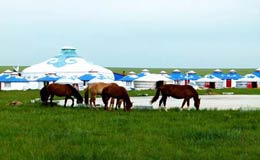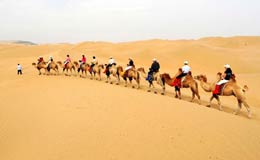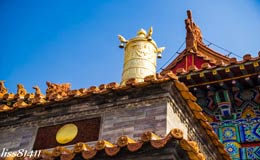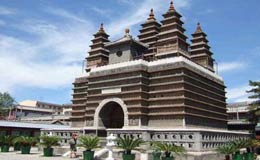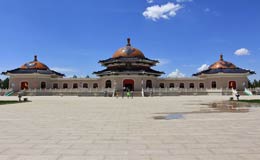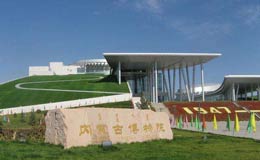Inner Mongolia Autonomous Region has peculiar natural scenery, long history and brilliant culture. Some people say that sunshine, fresh air and vast forests are one of the biggest draws for modern travelers. Luckily, Inner Mongolia, located in north China, contains all of these features. There are prosperous forests, endless grassland, famous deserts, rich farms, broad water, various animals and plants and countless treasures underground on this extensive land. the majoy tourist City is boasts a great many places of natural interests and historic attractions, such as: Xilamuren Grassland and the Dazhao Temple in Hohhot, the Jenghiz Khan Mausoleum and the Wudangzhao Monastery in Baotou City.
Let’s take a look at the top 9 attractions in Inner Mongolia.
|
Xilamuren Grassland is one of the must-see attractions in Inner Mongolia. In Mongolian language,Xilamuren means “yellow water,and some people would like to call it “Zhao River”. |
Resonant Sand Gorge means “the desert with horns” in the Mongolian language. Located the east side of Kubuqi Desert, this site is in a crescent shape with gold color. |
The Wudangzhao Monastery is not only the largest lamasery in Inner Mongolia but also the best preserved. This monastery is impressive and majestic. |
|
The Kubuqi Desert is one of the largest in China. Located south of the famous Gobi desert, it is a paradise of sand and blue sky. Ideal with experiencing a desert in one day, a camel brings us to the dunes, lost in the middle of nowhere.
|
Dazhao Temple is located in the northern Hohhot. Built in 1580, it is the first Lamaism Temple in Hohhot.Dazhao Temple, ‘Wuliang Si (Infinite Temple)’ in Chinese, is the oldest building and the largest temple in Hohhot, Inner Mongolia. |
Five Pagoda Temple is a famous Buddhist temple in the city of Hohhot of Inner Mongolia Autonomous Region, northwestern China. It is located in the old city of Hohhot.The temple was initially constructed from 1727 AD and ended at 1732 AD. |
|
The Genghis Khan Mausoleum was built in the year 1954 and is a major attraction in Inner Mongolia.Although there have been several disputes over the authenticity of this monument, it still attracts thousands of people each month and is now considered to be a holy location. |
Zhaojun Museum, namely the Zhaojun Tomb which is said to be the resting place of Wang Zhaojun is located by the Dahei River in 9km north of Hohhot City, Inner Mongolia Autonomous Region of China. In 1964, Zhaojun Tomb was listed as one of the key culture relic units of Inner Mongolia Autonomous Region. |
Situated in the north-west of the intersection at Xinhua East Street and Dongerhuan Road, Hohhot, the Inner Mongolia Museum is adjacent to Wulanqiate Grand Theater with a main building area of more than 50,000 square meters, a 4-story main structure and a 6-story local structure. |


